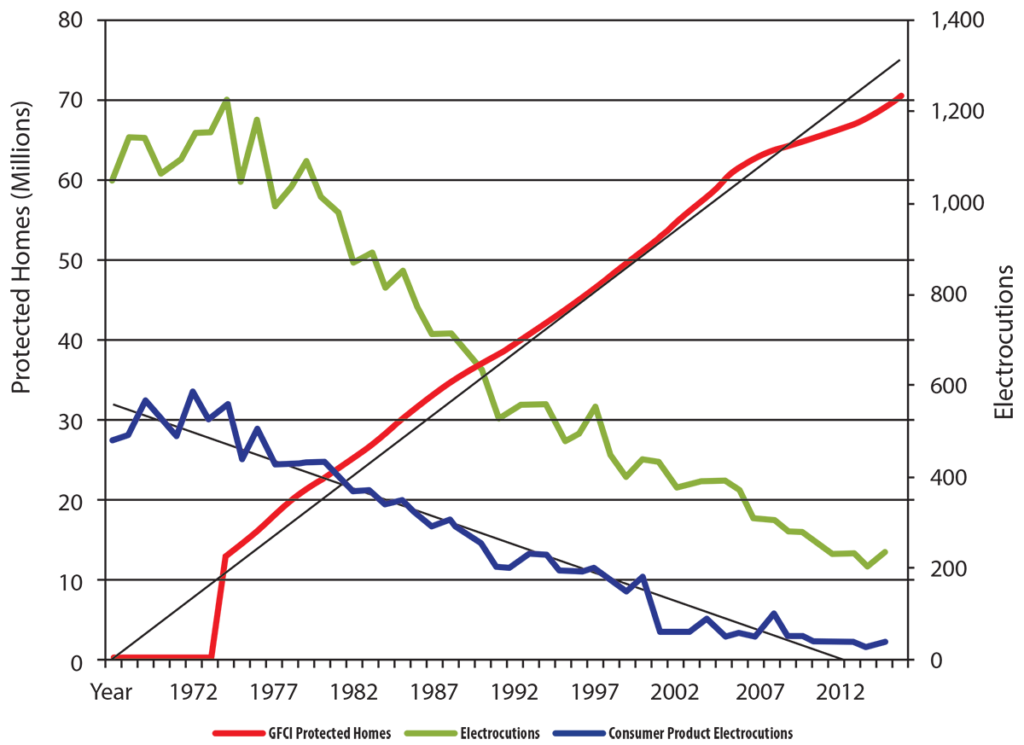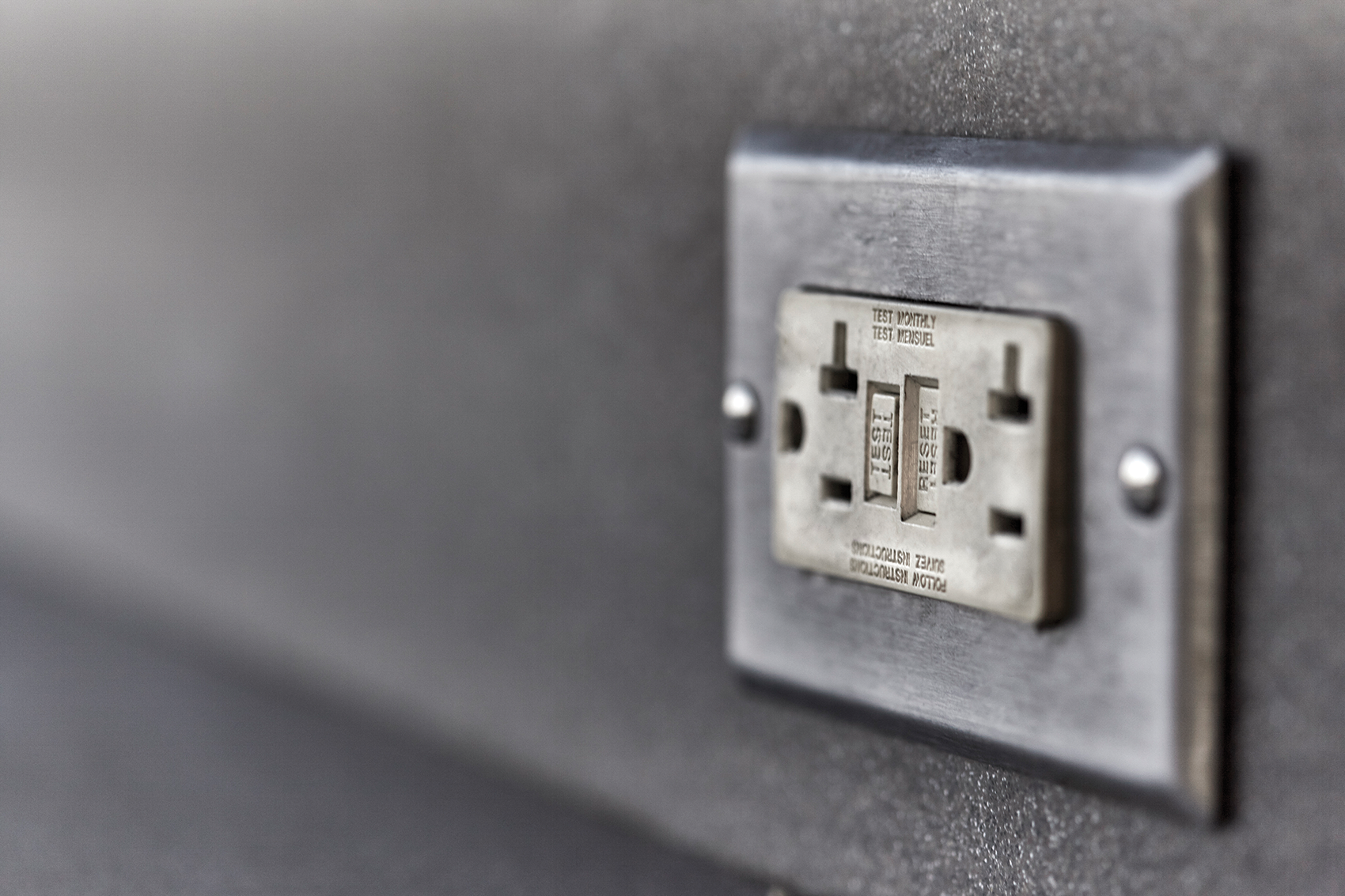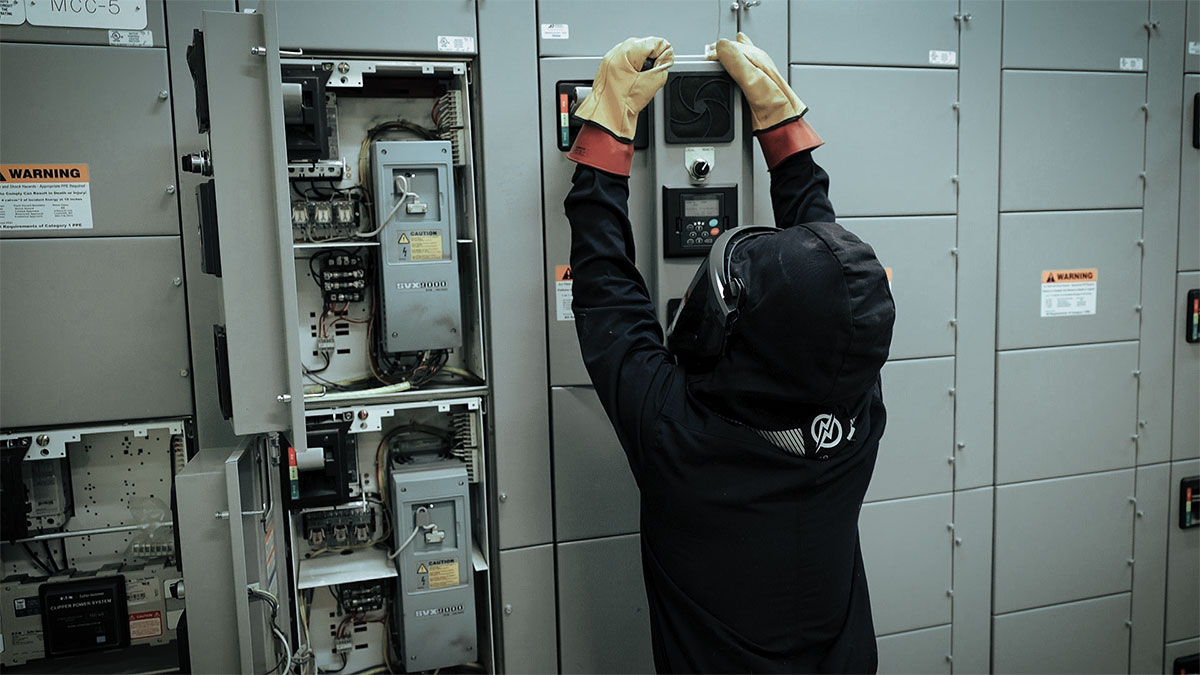The International Association of Electrical Inspectors (IAEI) is working with the Electrical Safety Foundation International (ESFI) to educate consumers about the importance of GFCIs in preventing electric shock and electrocutions.
The Consumer Product Safety Commission estimates that 50% of home electrocutions have been prevented by the introduction of Ground-Fault Circuit Interrupters (GFCIs). GFCIs are electrical safety devices that trip electrical circuits when they detect ground faults or leakage currents. A person who becomes part of a path for leakage current will be severely shocked or electrocuted. These outlets prevent deadly shock by quickly shutting off power to the circuit if the electricity flowing into the circuit differs by even a slight amount from that returning. A GFCI should be used in any indoor or outdoor area where water may come into contact with electrical products. The National Electrical Code (NEC) currently requires that GFCIs be installed in all kitchens, bathrooms, garages, outdoors, and within six feet of any sink.

GFCIs have been required by the NEC since 1971. Since the first introduction of GFCIs in homes, there has been an 81% drop in electrocutions and a 95% drop in electrocutions caused by consumer products. But because the code only applies to new construction, if electrical improvements have not been made in your older home, you could be putting yourself and your family at risk of electrocution.
Major GFCI Mandates in the National Electrical Code
1971: Ground Fault Circuit Interrupters required for outdoor receptacles
1975: Ground Fault Circuit Interrupters required for bathroom receptacles
1978: Ground Fault Circuit Interrupters required in garage wall receptacles
1987: Ground Fault Circuit Interrupters on countertop receptacles within 6 ft of kitchen sink
Ground Fault Circuit Interrupters required in at least one basement receptacle
1990: Ground Fault Circuit Interrupters required in crawl spaces
1993: Ground Fault Circuit Interrupters required within 6 ft of wet bar sinks
1996: Ground Fault Circuit Interrupters required in all outdoor receptacles, including balconies
Ground Fault Circuit Interrupters required as all kitchen receptacles serving countertops
1999: Ground Fault Circuit Interrupter required for electric heating cables in all floors
2005: Ground Fault Circuit Interrupter required within 6 ft of laundry & utility sinks
2011: Ground Fault Circuit Interrupter required in receptacles within 6 ft of any sink
2014: Ground Fault Circuit Interrupter required in receptacles within 6 ft of any bathtub or shower stall
Ground Fault Circuit Interrupter required in receptacles in laundry areas
Ground Fault Circuit Interrupter required in receptacles or junction boxes for kitchen dishwashers
2017: Ground Fault Circuit Interrupter Current Requirements
“In a society where children and adults frequently live with phones and other electronics in their hands, it’s important to remember how deadly these devices can be when plugged into a source of electricity,” said ESFI President, Brett Brenner. “When plugged into a GFCI outlet, it could mean the difference between life and death.”
GFCIs should be tested monthly to ensure that they are in working order. Any person can test a GFCI at the receptacle, but if the device is not functioning properly, ESFI recommends contacting a qualified electrician to repair it.
To ensure that your home has GFCIs in all required locations, contact a qualified electrician near you. To learn more about electrical safety and code requirements, visit www.esfi.org.















Find Us on Socials